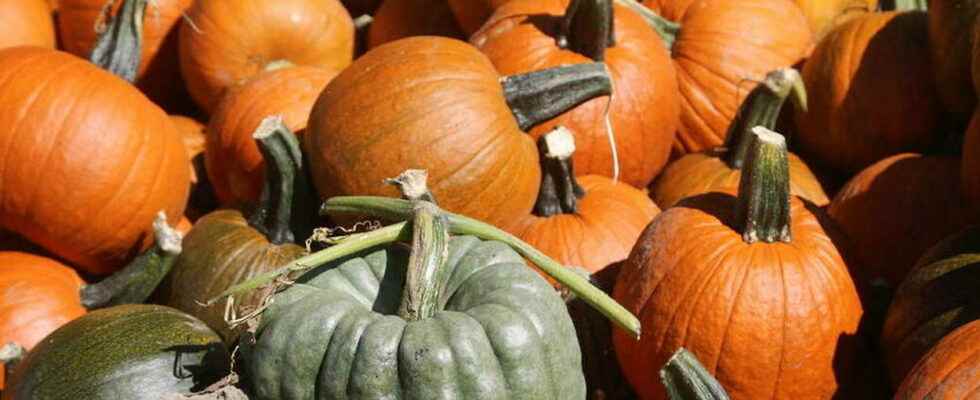The confusion between edible and ornamental squash is not without risk to health, with digestive problems as a result. Our advices.
By Lea Oudoire
© CREATIVE TOUCH IMAGING LTD / NurPhoto / NurPhoto via AFP
Published on
Link copied
Copy link
VSend lap for Halloween. Now is the time to put away the disguises and take down the decorations. It’s no longer witches, ghosts, zombies or other monsters to be wary of… but certain decorative gourds. The National Agency for Food, Environmental and Occupational Health Safety (Anses) is issuing the alert on the dangers of their consumption.
With their strange shapes, these vegetables perfectly adorn interiors, but still too often end up on plates. In recent years, several hundred cases of poisoning have been recorded in France, causing more or less severe symptoms.
READ ALSOJean-François Piège’s oven-roasted butternut squash
In the heart of the autumn season, it is sometimes difficult to sort out the pumpkins, pumpkins, butternuts and other cucurbits. Despite appearing harmless at first sight, not all of them are edible. The danger concerns in particular ornamental gourds, the very popular gourds. These are present on market stalls, like their edible cousins, and are often exact copies.
Haro on cucurbitacin
But some edible squash, grown in vegetable gardens, also end up no longer being edible due to a process of wild hybridization. Indeed, the joint cultivation of edible and toxic squash in the same plot sometimes transfers toxic properties to food varieties. Why would a harmless vegetable become a danger for consumers? It is simply a natural defense system to resist insect attacks. Some squashes thus produce cucurbitacins, bitter substances that are very irritating for small animals, but also for humans when cooking them. This group of organic compounds is resistant to the heat of the oven or pan and sometimes leads to poisoning if ingested.
ANSES returns to a study carried out between January 2012 and December 2016 by French poison control centers, presenting 353 cases of exposure to inedible squash. The results reveal that 55.8% of the gourds that caused poisoning had been purchased commercially, while 25.5% came from a vegetable garden. Bitter gourd poisoning usually results in stomach aches, abdominal pain, dehydration, tachycardia, diarrhea, or even nausea and vomiting. This retrospective also shows that only 4% of the patients had suffered poisoning of “moderate severity” (intense pain, hypotension, bloody diarrhea, etc.). None of them had presented severe, life-threatening symptoms.
How to sort
Even when they look the same, it is possible to tell the difference between edible and inedible squash. The first precaution to take is also the simplest: never eat your ornamental gourds. Check the labels carefully or ask the merchant directly when purchasing. Second precaution, if you feel the slightest bitter taste on a raw or cooked piece, it is surely an inedible squash. Finally, be very careful about growing squash in vegetable gardens. Choose good quality seeds and avoid growing decorative and edible varieties close to each other.
In the event of symptoms consistent with poisoning, contact a physician or a poison control center directly.
